Beautiful landscapes and exquisite medieval hilltowns make this tranquil region an enchanting place, and properties here make a sound investment, says Fleur Kinson…
Photos by Getty Images
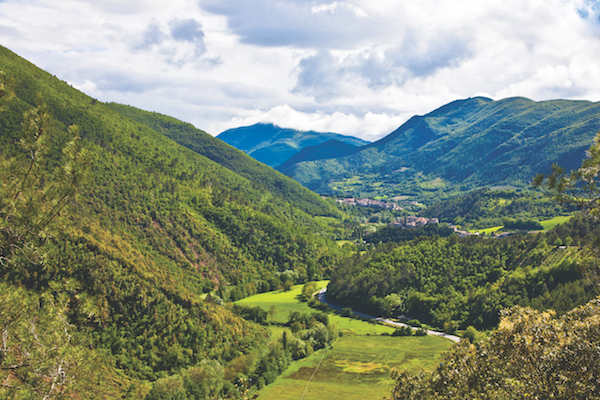
Nestled in the centre of the Italian peninsula, with Tuscany, Lazio and Le Marche as neighbours, Umbria is a region of wide rural vistas and captivating hilltop towns. Spacious and leafy, it rightly calls itself ‘the green heart of Italy’. But this heart is no bustling hub or communications crossroads. Instead it is a dreamily serene place where worldly concerns seem to melt away and your mind is slowly drawn towards all that is calm and timeless.
Umbria is often fancifully imagined as Italy’s mystical core, or its ‘soul’ if you prefer to think in those terms. It’s not just the deep tranquillity of the place that invites a sense of transcendence; even the landscape seems physically arranged to lure your thoughts upward. Sensuously rounded Apennine mountains snake down the eastern length of Umbria, while soft hills and valleys undulate everywhere else, making for arresting landscape views that pull your eye across beautiful wide spaces, out to the horizon and up to the sky. The region’s perfect countryside has inspired a thousand paintings, and regularly stops you in your tracks and sets you fumbling for your camera.
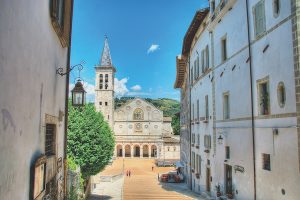
No surprise, therefore, that dreamily beautiful Umbria has inspired so many mystics and spawned so many saints. St Valentine was born here. As were Saints Benedict, Clare, Rita and, of course, Francis of Assisi. That’s not a bad haul of divines for such a small and thinly-populated bit of Italy. It should also come as little surprise that Umbria is home to a particularly gorgeous crop of churches and cathedrals. The region’s white, pink and golden stone makes for plenty of stunning old buildings of every kind. In terms of landscape, architecture and fine art, Umbria is a feast for the eyes and mind.
Lovers of the urban whirl should note that this isn’t really a region for them. Umbria offers intoxicatingly lovely countryside and breathtaking ancient towns, but there are no large cities here. No dense traffic, jostling crowds or endless queues (though Assisi can get a bit rammed in the holiday season). The largest settlement, Perugia, is home to fewer than 170,000 people, making it about as populous as Telford or Ipswich. The joy of Umbria lies in its rural spaces and its gorgeous old hilltowns full of decoratively-wrought historical buildings.
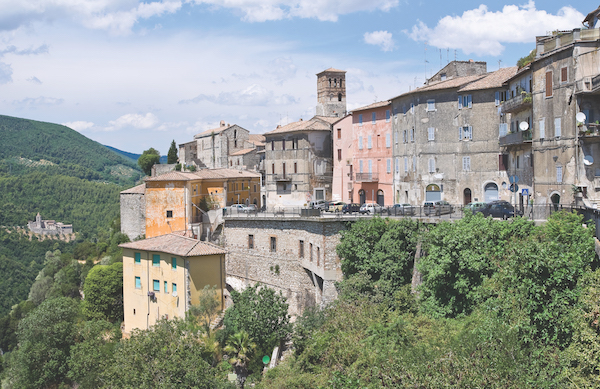
Calendar of festivals
Tranquil it all may be, but that isn’t to say there’s nothing going on. Prosperous and well-maintained, Umbria’s settlements enjoy a very lively calendar of festivals and cultural events – many of which attract international clientele. And while Umbria isn’t teeming with traffic, it isn’t remote or hard to get to. The road and rail infrastructure here is good, and there are direct flights to Perugia from the UK. As peaceful getaways go, Umbria is notably easy to access.
Foreign buyers first ‘discovered’ Umbria about 40 years ago, when rising prices in Tuscany prompted some to start exploring its adjacent regions. To many of them, Umbria came as a revelation. Here was a place with landscapes that were just as beautiful – if not more so – than Tuscany’s, and with perhaps an even greater abundance of perfect, dainty old towns to explore. The food and wine was just as magnificent, the sunshine just as hot, and yet the property was much cheaper. It didn’t take long for Umbria’s fame to achieve near-parity with Tuscany’s, nor for its property prices to climb. But they never quite reached the hysterical pitch of some parts of Tuscany, and today a home in Umbria is still likely to be less expensive than its equivalent over the border.
It’s also likely to be less expensive today than it was ten years ago. Most of us are familiar with the long-lasting effects of the 2007-2008 global financial crisis on various property markets round the world. Italy, with its famously stable property market, was affected less dramatically than many other nations, but the country still saw a fairly sharp decline in numbers of foreign buyers and a long, gentle sink in property prices. Things have improved a bit over recent years, but it remains the case that right now is a very good time to buy – with the opportunity to get quite a bit more for your money today than you would have done a decade ago.
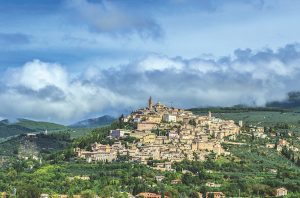
Umbria remains a good long-term investment too, because the delights that keep drawing visitors and would-be buyers here are not diminishing and, even more importantly, are not expected to diminish. People are not going to lose interest in space and tranquillity, in natural beauty, in fine old architecture or in a high quality of life. They are not going to lose interest in going on holiday, eating perfect food and basking in an unspoilt part of the world. So they are going to keep coming to Umbria. Umbria protects its countryside and its buildings; it does not allow insensitive building or over-development. It protects its charms, and that will protect its property values.
As for what sort of prices you might expect to pay for a home in Umbria these days, you’ll understand that it’s hard to generalise, but here is a very rough guide. A nicely renovated village apartment might ask as little as €60,000, while a two-bedroom village house might be had for only €100,000. Small country houses start at about €150,000, and larger farmhouses at about €250,000.Even in pricy tourist town Assisi, it’s possible to find a two-bedroom apartment for as little as €200,000. Of course, Umbria has no shortage of sumptuous luxury properties in its beautiful little towns and out in its glorious countryside. Buyers with budgets from €400,000 up into the millions will find plenty here to delight them.
Obviously certain areas and towns are more expensive than others, not to mention slightly different in landscape or atmosphere, so it’s useful to have an overview of Umbria before you begin your property hunt. We’ll start by looking at the region’s physical geography then move on to its best-loved settlements.
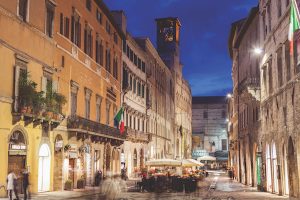
Central, northern and western Umbria tends to see fertile valleys full of manicured cropfields unfurling between rounded elevations. In the far south and east, the terrain climbs higher and in places is more craggy and forested.
In general, the north and centre of Umbria tends to see higher property prices than the south and borderlands. In the north, the Upper Tiber Valley area has proven very popular with foreign buyers, as has the gorgeous Vale of Spoleto area in central Umbria. (Now often called by the rather less romantic name of ‘the Umbra Valley’, the Vale of Spoleto stretches between Perugia and Spoleto).
Buyers with modest budgets should be sure to investigate Umbria’s southeast corner, where the region’s lowest prices are usually found. The southeast offers considerable physical beauty in the form of the Nera Valley (or ‘Valnerina’) and the bewitching Sibillini Mountains.
A significant point of geography to note is that Umbria has no coastline. (It is in fact the only Italian region to have neither a coastline nor an international border.) But it is blessed with some truly splendid lakes, the largest being warm, shallow Lake Trasimeno in the northwest. Ringed by handsome old towns and well-situated for easy access to Perugia and to nearby Tuscany, it isn’t surprising that the Lake Trasimeno area has proven quite popular with overseas buyers, but what’s rather more surprising is that the area still seems to be reasonably priced.
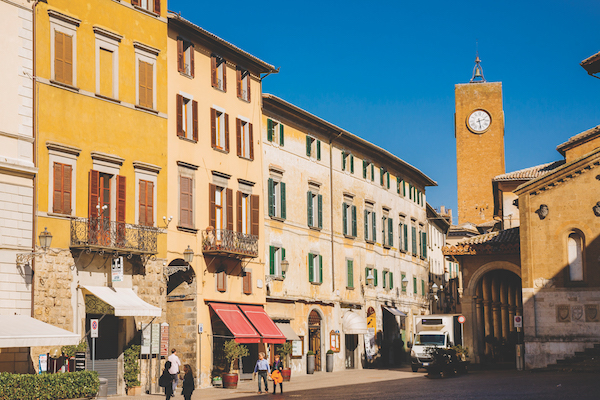
Ancient towns
As has already been made pretty clear, Umbria’s exquisite ancient towns – many of which are draped across the tops of gentle hills – are among the region’s key enchantments. Treasure troves of art and architecture, Umbria’s venerable towns typically consist of a clutch of pedestrian-friendly old alleys and cobbled streets opening onto perfect piazzas lined with beautiful buildings. The snug intimacy of their resident communities is often delightfully contrasted by the wide landscape vistas glimpsed from balconies, roof terraces and ramparts.
Many of Umbria’s perfect old towns are justifiably famous – gorgeous places such as Assisi, Todi, Spoleto and Orvieto, for example – while others deserve to be better known – places such as Gubbio, Montefalco, Bevagna, Montone, Città di Castello and Castellucio di Norcia, for example.
It’s difficult, in fact, to think of a single Umbrian settlement that is devoid of charm, beauty or character. There may well be one out there, but I haven’t found it yet. (Perhaps “In Search of One Dreary Town in Umbria” would make a good subject for a feature.) Umbria’s little towns are often strung relatively close to one another, making ‘hilltown-hopping’ as much a delightful activity here.
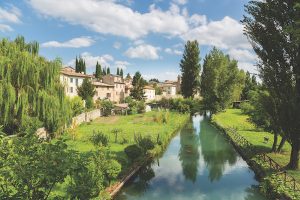
Many buyers have opted for an apartment in one of Umbria’s old towns rather than investing in a rural property outside town. The obvious advantages of this are the chance to feel totally immersed into the community, plus of course a longer holiday rentals season. The rural rentals season generally runs from May to early October, but the better-known hilltowns often see a season that is considerably longer than that.
If you’re interested in maximising holiday rentals, the best hilltown rental prospects of all are to be had in Assisi and Perugia. As well as being arrestingly beautiful, with stunning buildings and inspiring landscape views, Assisi is one of the world’s great pilgrimage sites. People flock here year-round. Perugia, meanwhile, has three rentals markets: tourists, students and businesspeople who often make short – and medium-term stays in the city. As regional capital, there’s a little bit of modern sprawl at the foot of Perugia’s hill, and you’re more likely to want to buy up in the handsome and atmospheric old centre on high.
Useful contacts
Il Castelli di Tara
ItaliaCasa
Via dei Colli
For more on Umbria’s property potential, see our regional guide
Umbria property picks
[slideshow_deploy id=’22622′]
